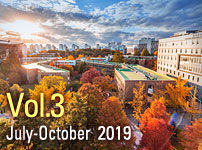SUNGKYUNKWAN UNIVERSITY (SKKU), SEOUL, KOREA
- Prof. Um's Research Team Discovers Method to Significantly Improve
Diagnosis of Lung Cancer - Prof. Hyungkyun Cho's Team Develops Miniaturization and Expansion of Memory Capacity
- Prof. Sangwoo Kim's Team Develops Energy-Free Micro Dust Removing Technology
- Prof. Jaecheol Lee Finds New Treatment for Cardiac Diseases Using Genetic Scissors
and Stem Cells - Prof. Bongsik Song Develops Ultra-Low Loss and High Performing Silicon Carbide
Nano Photoelectric Element

Professor Soongho UM (Dept. of Chemical Engineering) and Professor Myungjoo AHN (School of Medicine)'s research team announced that they have discovered a method to significantly improve the diagnosis of lung cancer. The previous method was expensive and took 3 weeks to produce a diagnosis. With this discovery, cancer can be diagnosed inexpensively within just 3 hours. This research was conducted under the auspices of the Ministry of Health and Welfare, and it was selected for the cover of the world-renowned journal "Advanced Biosystems" on June 14th.
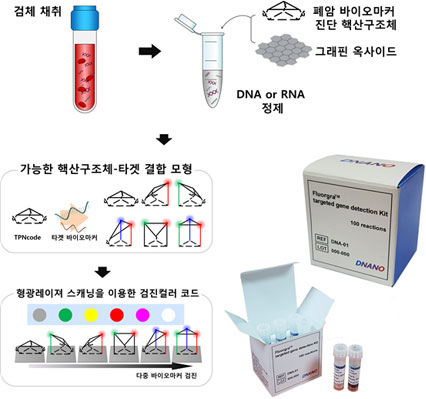

Professor Hyungkyun CHO's research team (New Materials Engineering) announced that they have discovered a method to miniaturize and expand memory capacity by developing a variable resistance memory device. This research was published online in the world renowned journal "ACS Nano" (IF=13.709).
The research team was able to create amorphous oxide thin film using metal precursor and was successful in developing and proving the stability of ReRAM. In this process the team was able to prove the mechanism of memory devices. They also developed a device that can expand the degree of integration of the memory.
The world is now entering the era of 5G and the role of memory is becoming greater than ever. ReRAM is the memory of the next generation that can replace DRAM and NAND-FLASH.
An ideal memory for semiconductors has uniformity, a fast reading/writing speed, random access, a low cost, 3D expandability, is nonvolatile, has strong durability, is stable in different temperatures, and provides multiple states.
The research team used the electrochemical method to check the possibility of synthesizing devices. They argued that the electrochemical process can efficiently control OH- (hydroxyl ion) and the roughness of the surface. The density of OH- on the surface of electrodes is an important factor determining the growth rate of thin film. They have successfully synthesized an oxide thin later with nanoparticles and applied it in the memory device.

ReRAM is known to increase conductivity by creating vacant oxygen inside the basic material. However, this research proved that it acts as a bridge that enables the transmission of electrons.
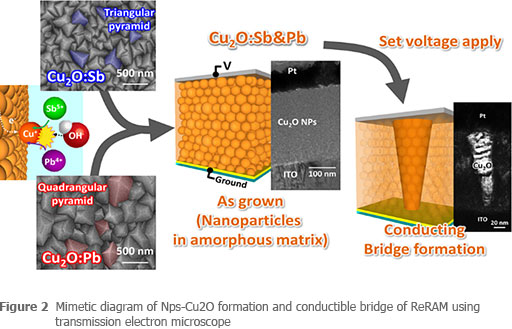

Professor Sangwoo KIM's research team (Dept. of Advanced Materials Science and Engineering) announced that they were able to create an energy-free, non-pressure micro dust collecting system using a 3D printer. With this achievement, micro dust can be removed from the environment without using any sort of energy.
Micro dust is known to be the main source of pollution in the atmosphere and has been categorized as a top grade carcinogen. There has been a great deal of research recently to develop technologies that remove micro dust, but most types incurred severe pressure loss and produced non-recyclable wastes. Electric filters take too up too much space and use energy, and also create ozone, which is harmful to the human body.
The research team created a villus structure using a 3D printer and were successful in creating static electricity using the friction caused by wind. The static electricity can remove micro dust without pressure loss and with no energy source.
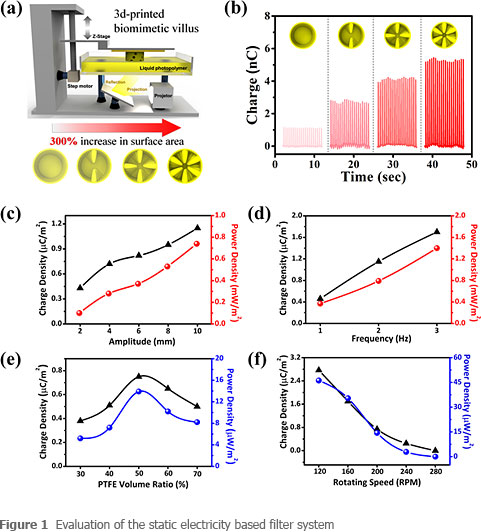
The electric-charged medium inside the material acts as a collector with the friction caused by the wind. It creates nearly zero pressure loss, unlike the discharger method used by high voltage.
The filter created by the research team can remove micro dust in nanometer sizes and can greatly increase the energy efficiency of circulation systems. It can also be reused after a simple cleaning; creating no waste.
Prof. Kim said, "We developed a smart filter that overcame the limits of previous filters. The new filters can be used in clean rooms, air filters in electric vehicles, domestic ventilation systems, and masks."
This research was conducted as a project sponsored by Ministry of Science, ICT and Future Planning, National Research Foundation of Korea and Korea Research Institute of Chemical Technology. It was published online in the world renowned journal "Nano Energy".
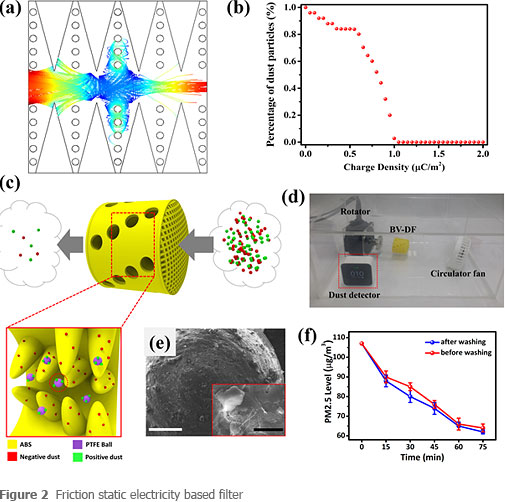

SKKU School of Pharmacy Professor Jaecheol LEE's research team announced that they have discovered the cause of cardiac diseases and opened a new path for the development of medicine.
This research was conducted under the auspices of the Ministry of Science and ICT research programs and has been conducted jointly with Stanford University. The results were posted in the journal "Nature" on July 18th:
[Title] Activation of PDGF Pathway Links LMNA Mutation to Dilated Cardiomyopathy
[Authors] Prof. Jaecheol LEE, Joseph C. Wu (Stanford University), Vittavat Termglinchan (Stanford University)
Dilated Cardiomyopathy (DCM) is a common disease in Korea, but the exact cause has not yet been discovered. The research team tried to discover the cause by collecting iPSC stem cell from the family member of the DCM patient. Using the genetic scissor, they discovered that the nuclear membrane of heart cells returns to normal when it is readjusted normally. They also found out that the nuclear membrane becomes abnormal when it is reversed.
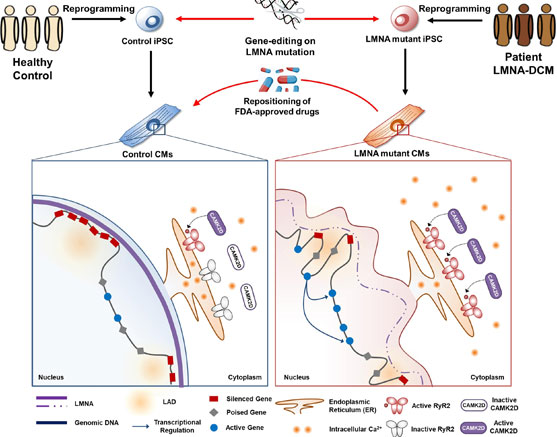

The team concluded that the abnormal status of the nuclear membrane due to gene modification causes epigenetic changes, which result in abnormal activation of the platelet-derived growth factor. This research has shown the target of the medicine and has created the possibility of using modified drugs that have already been approved by the FDA to cure cardiac diseases.
Prof. Lee said, "In the era of precision medicine, we need technology that can experimentally verify the prediction system. This research showed the possibility of developing new medicine to treat cardiac diseases."

Professor Bongsik SONG announced that he has developed an ultra-low loss silicon carbide in cooperation with foreign researchers. This result has opened the opportunity for the application of core devices in ICT such as integrated optical circuits, quantum communication light sources, and miniature IoT sensors.
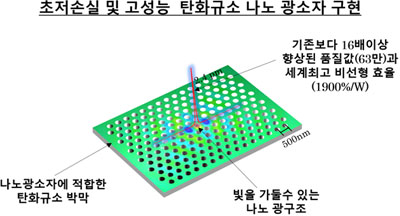
This research was published in the world renowned journal "Optica" on August 21st.
[Thesis] Ultrahigh-Q Photonic Crystal Nanocavities Based on 4H Silicon Carbide
[Main author] Prof. Bongsik SONG, Participant Author: Student (PhD) Heungjoon KIM
